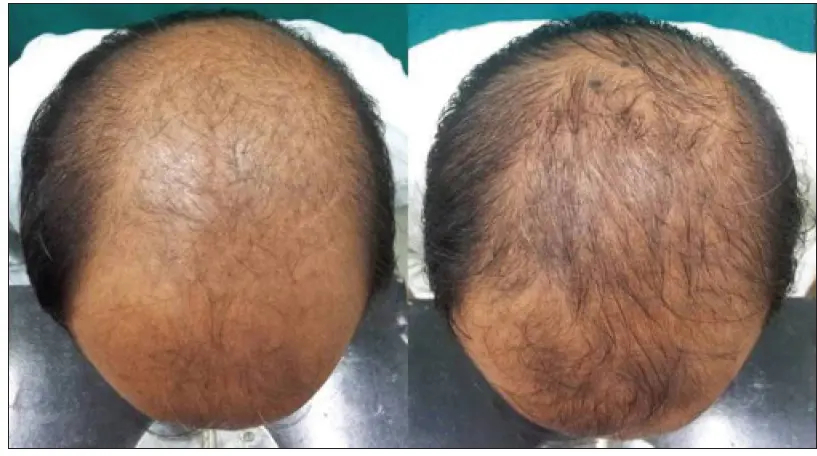When we look at Finasteride vs other treatments for hair loss, the discussion quickly becomes complex because no single solution works equally well for every patient. Hair loss, especially androgenetic alopecia (commonly known as male pattern baldness), is influenced by genetics, hormones, age, and lifestyle. When I see men in my practice who are worried about hair loss, one of the first things I remind them is that treatment is never one-size-fits-all.
Some patients notice a good response to medication, while others benefit more from adding a second treatment or considering surgical options. In the following sections, I will look at finasteride vs minoxidil, finasteride vs dutasteride, and finasteride vs hair transplant, outlining what each can realistically offer and where their limitations become clear.
Understanding How Finasteride Works
Finasteride is a pill that works by lowering the activity of a hormone called DHT, which is the main trigger for hair thinning in men with pattern baldness. DHT causes the hair roots to shrink over time, making the strands finer until they eventually stop growing. By reducing DHT, finasteride helps protect the existing hair and can even bring back some thickness in areas that are starting to thin. DHT is the main reason hair follicles shrink in men with pattern hair loss. By reducing DHT in the scalp, finasteride helps slow down thinning, protects the hair that is still present, and, in many men, encourages new growth.
The effects are gradual. Most patients start to notice improvement after six to twelve months of regular use. It is important to understand that the treatment only works while it is being taken. If it is stopped, hair loss will usually start again within a few months, and the progress that was made is often lost. (dermnetnz.org)
Finasteride vs Minoxidil
When people bring up finasteride vs minoxidil, I usually point out that we are really talking about two completely different approaches. Finasteride works from the inside by lowering the hormone that drives most male pattern hair loss, while minoxidil works on the outside, directly on the scalp, to encourage weaker hairs to keep growing a bit longer.
Minoxidil is easy to access since it does not require a prescription, and both men and women can use it safely. The main drawback is that it needs to be applied twice every day, and if someone stops using it, any benefit is usually lost. On its own, minoxidil can slow shedding and thicken some existing hairs, but the improvement is often modest.
Where I see the best results is when the two are combined. Finasteride addresses the hormonal driver of hair loss, while minoxidil provides local stimulation at the scalp. Together, they give patients a stronger chance of slowing down the process and even regaining some coverage, without having to move immediately into surgical treatments.
Finasteride vs Dutasteride
People often ask about finasteride vs dutasteride, and the main difference comes down to how strongly each one lowers DHT. Finasteride blocks one form of the enzyme that makes DHT, while dutasteride blocks both forms. Because of that, dutasteride usually brings DHT levels down more and can sometimes give faster or more noticeable regrowth.
The trade-off is that stronger action can mean a higher chance of side effects, like reduced sexual drive, erectile issues, or changes in mood for some men. Finasteride is officially approved for treating male pattern baldness, while dutasteride’s approval is for men with an enlarged prostate. Even so, some doctors use dutasteride for hair loss when they believe a patient might benefit from it, but it is considered an off-label use and needs a careful conversation about possible risks and expectations.
Finasteride vs Hair Transplant
When someone is weighing finasteride vs hair transplant, it really comes down to choosing between medicine and surgery. A transplant means moving healthy follicles from the back or sides of the head into areas that are thinning. The hairs that are moved will usually keep growing for life, but it can take close to a year before the full result looks natural.
The big advantage of surgery is that it can fill in spots where the follicles have already shut down and no medicine can bring them back. The downside is that it is costly, it takes a skilled surgeon to do well, and sometimes more than one procedure is needed if the baldness is advanced.
What I always point out is that even after a transplant, finasteride still has an important role. The new grafts are permanent, but the original hairs around them are still sensitive to DHT. Without treatment, those native hairs may continue to thin, which can leave the overall result looking patchy over time.
Combination Therapy: A Balanced Approach
In my experience, the best results usually come when treatments are combined rather than used alone. For example, many men do well taking finasteride while also applying minoxidil, since the two work in different ways and support each other. For those who go through with a hair transplant, staying on finasteride afterward is often just as important because it helps protect the native hair that was not moved during surgery.
Some clinics also add treatments like laser devices or platelet-rich plasma injections, which can give an extra push in certain cases. The right mix depends a lot on the person sitting in front of me. Someone who is just starting to thin at the crown may do very well with medicine alone, while a man with more advanced hair loss often needs surgery plus ongoing medical therapy to keep the overall look stable.
Safety and Side Effects
Finasteride is usually tolerated pretty well, but some men do run into sexual side effects. That might mean less interest in sex, trouble keeping an erection, or even a drop in semen volume. Most of the time, these problems fade once the drug is stopped, though there are rare stories of them hanging around.
Minoxidil tends to be easier on people—issues are usually limited to a dry or itchy scalp, or sometimes hair showing up in spots you didn’t want it, like on the forehead or face. Dutasteride can be a bit riskier than finasteride because it blocks DHT more aggressively. And when it comes to surgery, like a hair transplant, the concerns are the same as with most operations: infection, scarring, or grafts that simply don’t take.
Choosing the Right Treatment: Finasteride vs Other Treatments
The best option really depends on the person—things like age, how much hair they’ve already lost, overall health, and how comfortable they are with possible side effects. If thinning has just started, finasteride alone, or paired with minoxidil, is usually the go-to. But when bald patches are further along, especially those smooth shiny spots, medication won’t do much there, and a transplant may be the only way to get density back.
Dutasteride sometimes comes into play if finasteride doesn’t deliver enough results, though it’s a stronger drug and usually reserved for men willing to take on that extra risk under a doctor’s care. No treatment, however, will bring back the kind of hair someone had at sixteen. What they can do is slow down loss, keep more of what’s left, and often make a big difference in overall appearance.
Final Thoughts
Dealing with hair loss is personal, and it hits people differently. What works best really comes down to timing, comfort level, and how much risk someone is willing to take on. Finasteride is often the first step, especially if started early and used consistently. Minoxidil can help too, and in some cases, dutasteride or even surgery might be worth considering—but each comes with its own trade-offs.
There isn’t a one-size-fits-all answer here. The smartest move is talking it through with a doctor who understands the options and can weigh the risks against the results you’re hoping for. That way, you’re not just trying random treatments—you’re picking a plan that actually fits you.







1 Comment
[…] Want to learn more about finasteride and other hair loss treatments? Check out this guide: https://www.rocketmeds.store/finasteride-vs-other-treatments/ […]